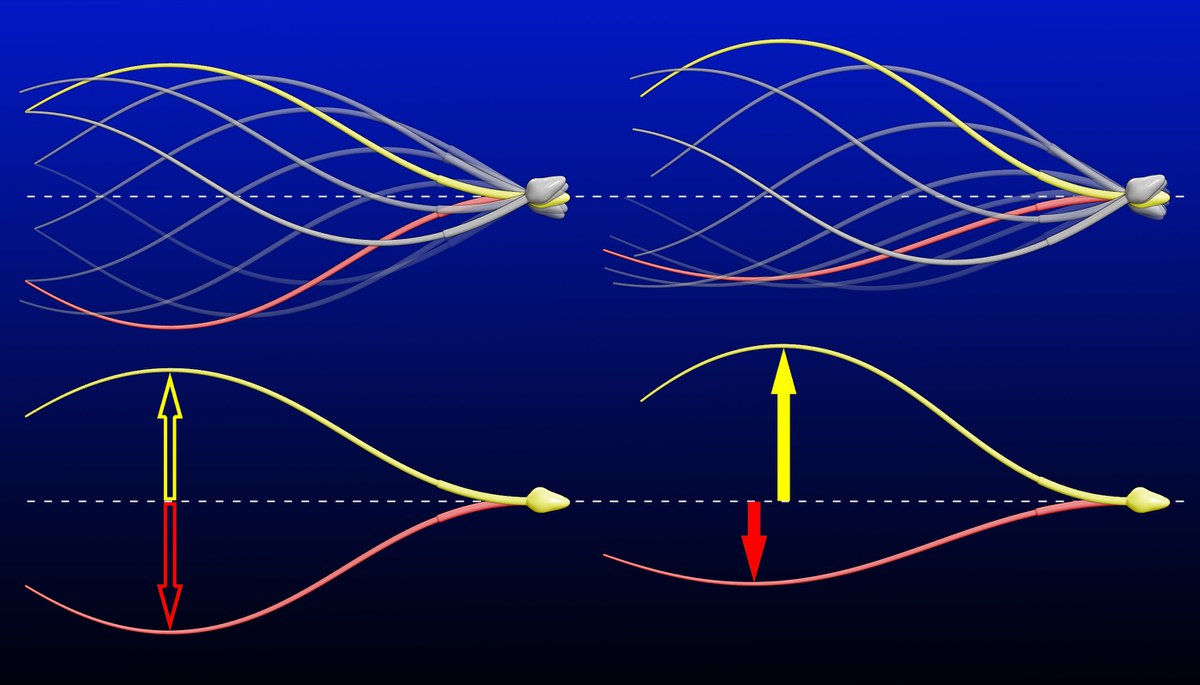“Musical Chords” Help Sperm Navigate
28 November 2017
Exactly how so-called biological “mircoswimmers” such as sperm or bacteria are able to navigate has been of interest to scientists and engineers for a long time; one seeks a better understanding of biological microswimmers, while the other strives to make advances in the development of synthetic micro-robots. Scientists from Jülich and the research institute caesar in Bonn have now discovered, using a combination of experiments, modelling and simulation, that sperm use a principle familiar to musicians everywhere – their tails resonate like a guitar string but with two frequencies or “notes”; in effect, a chord.

Fundamentally, the sperm tail performs several different functions: it is used as a propeller that drives sperm forward, as an antenna that captures and processes sensory stimuli, and as a rudder, able to correct the course it takes. Sperm swim forwards by waving their tail. As the wave travels from the head to the tip of the tail, liquid is pushed backwards allowing the sperm to be propelled forwards. In order to navigate, the tail beats more towards one side or the other, acting like the rudder of a boat. As a result, sperm swim from side to side, and not in straight lines.
The new study shows that sperm use a physical mechanism to produce an asymmetric beat. Not just one but two separate waves travel along the tail: one at a basic frequency and the other with twice this frequency. To put it in musical terms, sperm play “notes” in different octaves. When these two waves overlap each other, the resulting wave deflection changes over time. This causes the tail to undulate more to one side rather than the other. There are however substantial differences between the sperm tail and the rudder of a boat: symmetry is not broken in space, as with a rudder, but rather in time. In addition, there is no captain at the helm, but rather chemical signals. The scientists demonstrated that progesterone, a female sex hormone, is able to synchronize the two waves or “notes”, thus altering the path taken by the sperm.
Original Publication:
Guglielmo Saggiorato, Luis Alvarez, Jan F. Jikeli, U. Benjamin Kaupp, Gerhard Gompper, and Jens Elgeti (2017);
Human sperm steer with second harmonics of the flagellar beat;
Nature Communications 8, 1415 (2017), DOI: 10.1038/s41467-017-01462-y
Press release “Spermien navigieren im „Akkord““ by the research institution Caesar
Institute „Theory of Soft Matter and Biophysics“ (ICS-2 / IAS-2)
